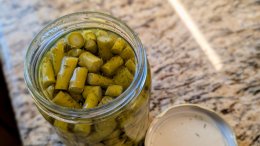Last week, the Canadian Food Inspection Agency (CFIA) issued a recall for Schwartz’s At Home smoked meat sold in Ontario and Quebec. A routine inspection found Listeria monocytogenes, the same bacteria that caused the massive Maple Leaf recall in 2008, which resulted in 57 confirmed illnesses, 22 deaths and $20 million in losses. So far, only one lot of Schwartz’s At Home meat is being recalled, and there have been no reported illnesses.
What is Listeria monocytogenes?
Listeria monocytogenes is a bacterium that can cause the disease listeriosis. Pregnant women, older adults and people with weakened immune systems are particularly at risk. In mild cases, symptoms are similar to those of other foodborne illnesses: nausea, vomiting, abdominal pain, diarrhea, headaches, fever and muscle soreness/stiffness. In serious cases, listeriosis can lead to blood poisoning, brain infection and death. Pregnant women are often advised to avoid unpasteurized dairy, deli meats, soft cheeses, raw meat, and raw or cold smoked fish, as the bacteria can pass through the placenta and cause miscarriage or infect the baby. Listeria is the third most common cause of meningitis in newborns.
The bacteria grows optimally between 30-37°C, but it can grow in temperatures as low as 0°C. Food that has been contaminated with listeria generally does not look or smell any different from uncontaminated product.
High-heat cooking and pasteurization can kill the bacteria, which means that the Schwartz’s At Home smoked meat became contaminated with listeria after the cooking/smoking process. In the Maple Leaf case, it is thought that the meat became contaminated during packaging.
What can I do to avoid listeriosis and other foodborne illnesses?
If you find yourself in the possession of a 500 g box of Schwartz’s At Home smoked meat with the UPC code 6 27533 96123 5 and the expiry date of December 13, 2013, THROW IT OUT. Do not try to salvage it — freezing only stops growth; it does not kill existing bacteria, and heating it to 74°C (165°F) just sounds unappetizing.
Virtually all foods can be contaminated with listeria and other bacteria like salmonella and E. Coli via the soil, water, or contact with contaminated animals, food or people. While we can't control what happens at the plant, we can prevent most foodborne illness by remembering four steps: clean, separate, cook and chill.
- Clean. Wash hands and surfaces often. Wash fruits and vegetables, but don’t wash raw meats; it is not effective and can spread bacteria around your kitchen.
- Separate. Avoid cross-contamination by using separate cutting boards and utensils for raw meats and cooked foods or washed vegetables. Store raw meats on the bottom shelf of the fridge, so their juices don’t drip onto your cooked foods or vegetables.
- Cook. Do not rely on the “colour test” or on touch to determine if your meat is done. Use a meat thermometer! As a general rule, red meat needs to be cooked to 71˚C (160˚F), poultry should be cooked to 74˚C (165˚F) and whole birds should be cooked to 85˚C (185˚F).
- Chill. Bacterias grow best at room temperature, so it is important to refrigerate/freeze foods promptly to slow growth and avoid disease. Never thaw foods at room temperature, and never refreeze raw, thawed meats.













